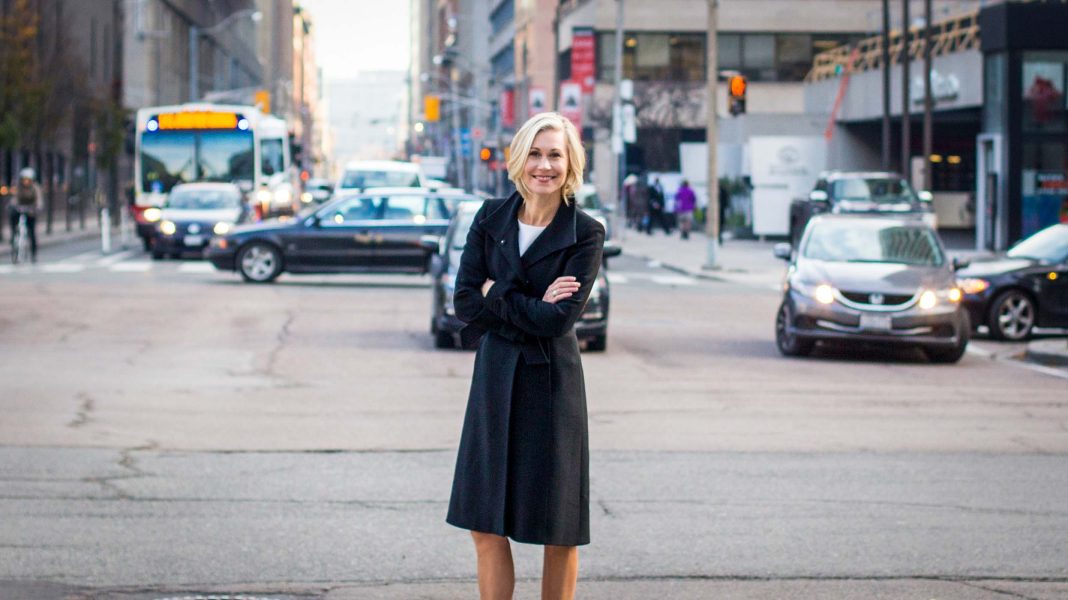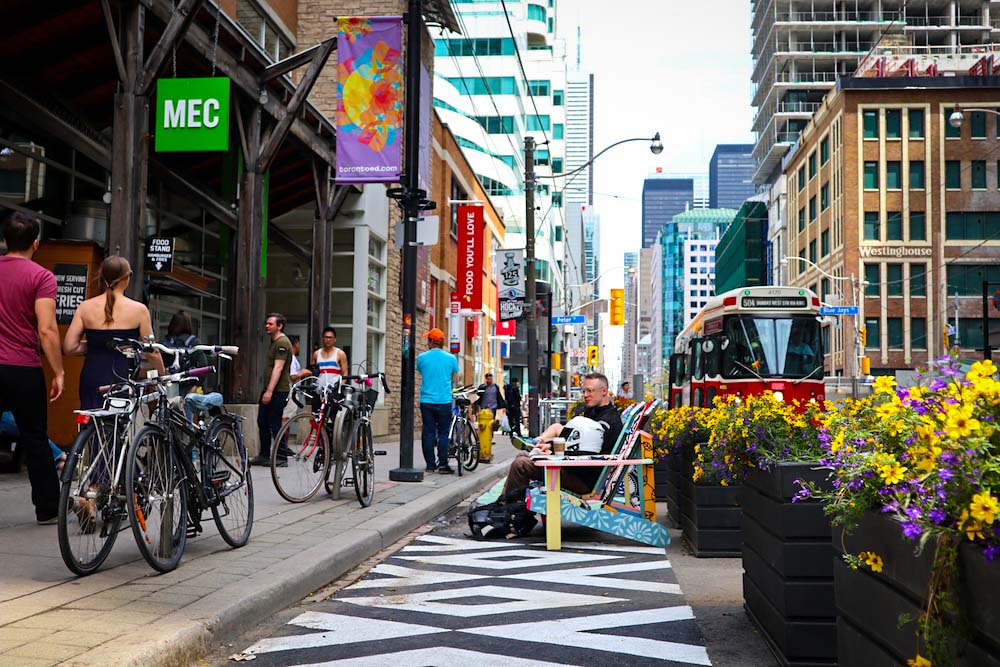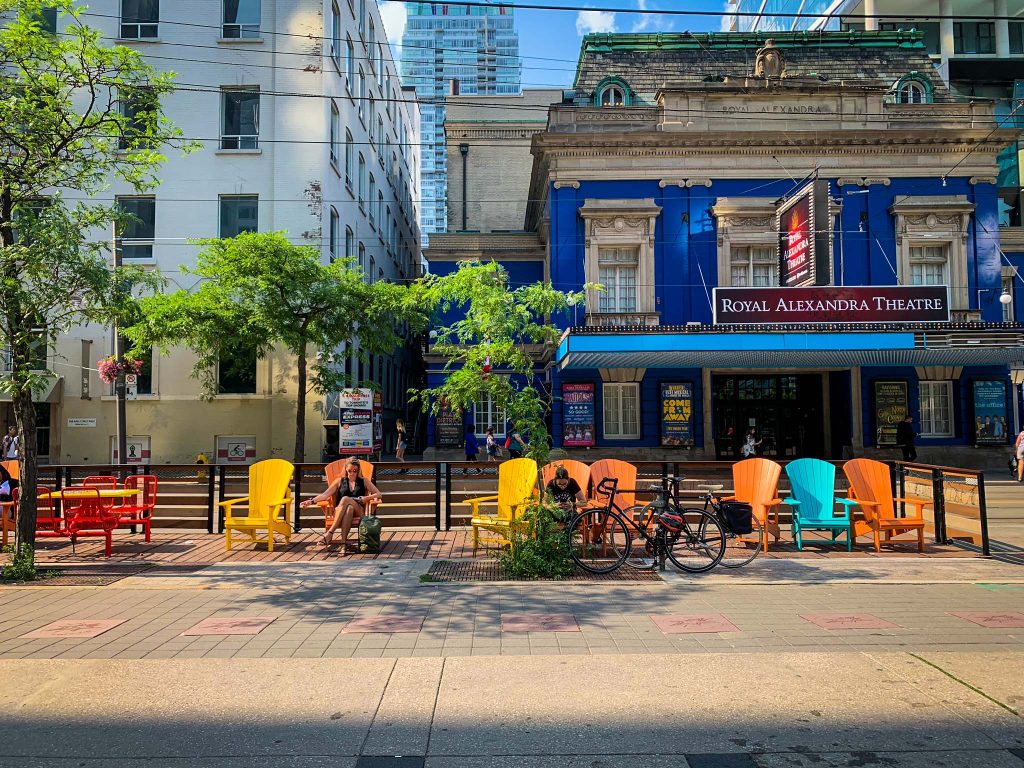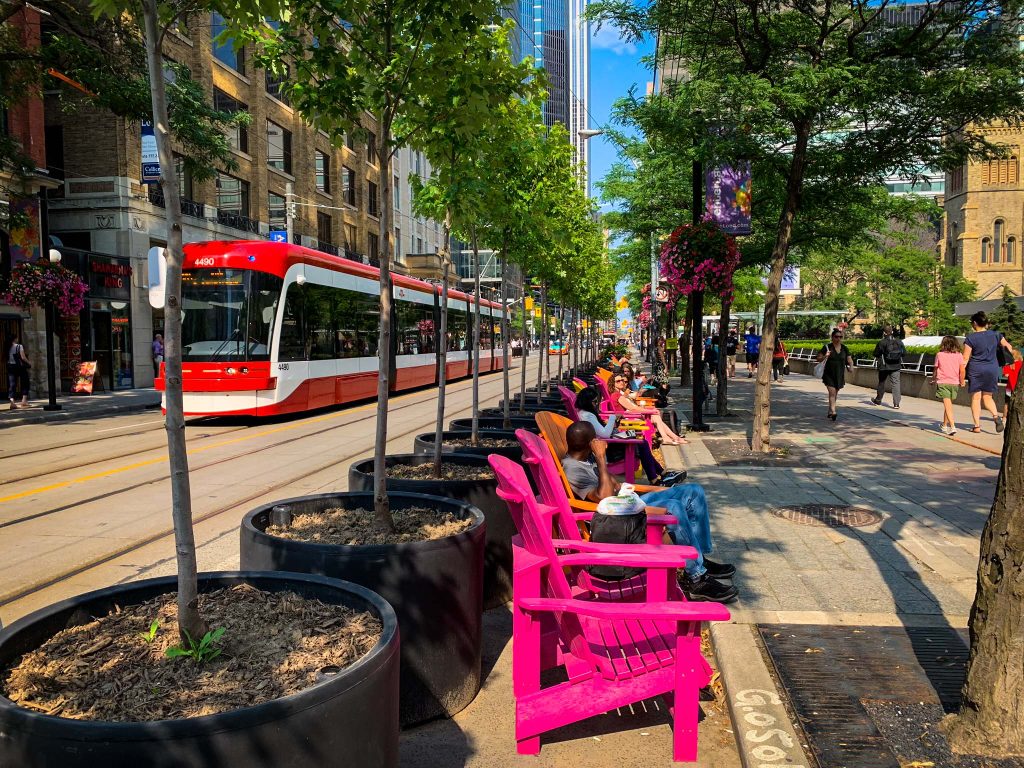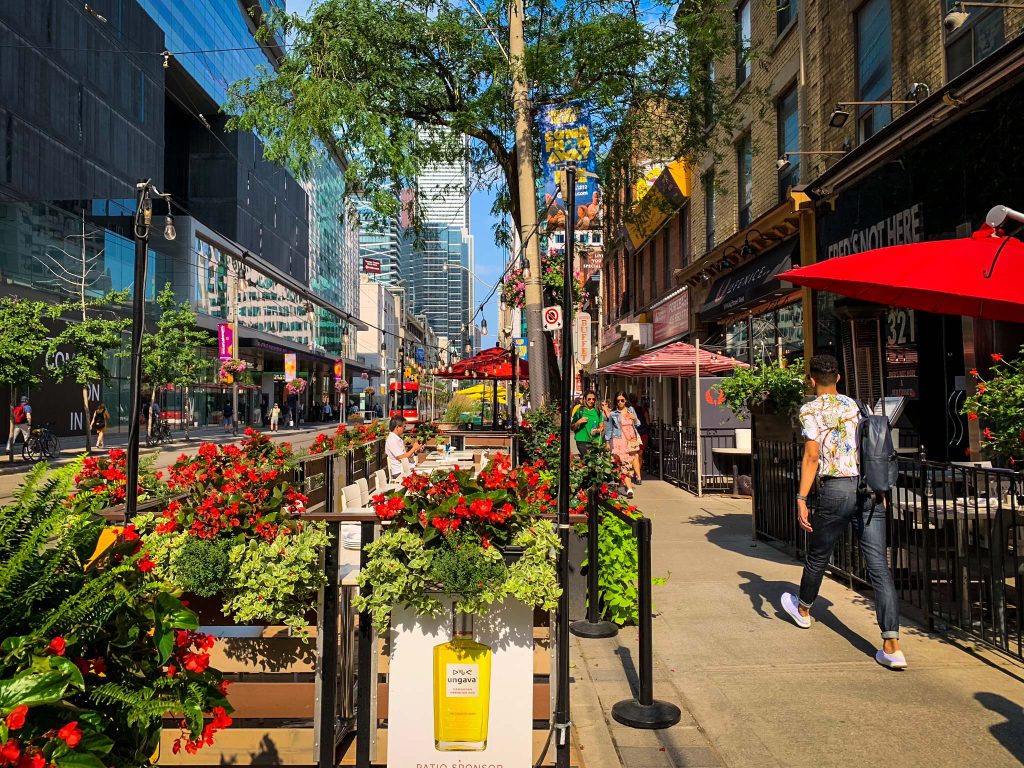What do a liberal arts degree, a congested street, and the City of Toronto have in common? They all link back to our CityChanger Jennifer Keesmaat, an unconventional urban planner. We sat down with this inspiring changemaker to find out what makes her tick.
Jennifer Keesmaat is famous for her bold initiatives, innovative projects, and proactive, can-do attitude. Many know her for being Toronto’s former chief planner; however, Jennifer’s work goes far beyond that.
In 2018, she founded her own company, The Keesmaat Group, which assists organisations, governments, and companies worldwide in making cities future-proof. Jennifer also hosts two podcasts (Invisible City & Within Reach), is on the Advisory Board of Toronto’s Urban Land Institute, and ran for Mayor of Toronto just a few years ago. But what was the starting point of Jennifer’s career?
A Jane Jacobs Inspired Liberal Arts Student
What many don’t know is that our CityChanger did an undergrad in English and Philosophy. You might wonder how someone with a liberal arts background got into urban planning. When asked about it, Jennifer laughs and tells us this story:
After completing her undergraduate degree, she began working as a community activist on housing issues in Vancouver. There, she organised a speakers’ forum on how to stop gentrification and promote inclusion. During the preparations for this forum, Jennifer got in touch with the planning department of the City of Vancouver. As luck would have it, someone there asked her whether she was an urban planner – since she talked like one. “And I was flabbergasted because I didn’t really know what planning was,” Jennifer recalls.
Someone then recommended she read Jane Jacobs’ “The Death and Life of Great American Cities”. “The minute I started reading Jane Jacobs, I felt like I was home, and I knew that this was where my passions lie and how I wanted to spend my professional life,” Jennifer describes this turning point in her career.
Fortunately, her liberal arts degree wasn’t all for nothing. Quite the contrary; Jennifer tells us that her studies in humanities form the foundation of her work today. They enable her to bring some of the most fundamental questions about life into the very practical field that is urban planning. When starting a project, Jennifer isn’t just concerned about the bricks and mortar of the city. She looks at the bigger picture and considers what makes a project inclusive and useful to society. This approach, as she admits herself, makes Jennifer quite an unconventional urban planner.
The Urban Planning Maze

Another unusual fact about our CityChanger is that Jennifer loves the complexity and challenges her job involves.
Urban planning, she tells us, “sits at the intersection of a multitude of different interests in society”. Planners need to factor in all sorts of aspects when implementing their projects. To just name a few: public interests, heritage, business activities, communities, transportation, and green spaces. These different aspects are in constant flux, which further increases the complexity of urban planning.
What others deem as exhausting, or a necessary evil, is a source of joy for Jennifer. She laughs and exclaims: “I wake up every day, and I jump out of bed because I’m excited about my work. There’s so much work to be done. And there are always new things to learn and to understand.”
Baby Steps Towards Giant Plans
This fascination with complexity and change also comes in handy when starting new projects. While others might be intimidated by large-scale plans, Jennifer can’t get enough of them. She asserts that big projects can be tackled easily under one condition: you need to have a clear strategy. Much like setting up a business (which Jennifer has done more than once), urban planning requires a step-by-step strategy. To avoid anxiety and frustration, Jennifer suggests asking ourselves:
“What is one thing that I need to do today that will advance my goal?”
With a smile she adds, “and then, typically, the strategy starts to build on itself”.
How to Stay on Track
On top of having a clear plan, Jennifer genuinely enjoys what she’s doing. That’s why she finds staying motivated easy. She underlines that her work is not so much about motivation but rather about resilience.
She emphasises: “It takes a tremendous amount of resilience to stay on course and to not lose your focus, or to lose your belief that you can achieve what you’re seeking to achieve.”
To build resilience, a clear vision of what you want to accomplish and rock-solid values are fundamental. Equipped with these ideals, it will be easier to stay on track throughout a projects’ implementation – particularly when things get a little thorny, Jennifer asserts.
When asked about her own ideals, our CityChanger is quick to reply: “I’ve always believed in the vision of being able to create and design inclusive cities where everyone has the opportunity to live to their highest aspirations, to flourish.”
Are Haters Gonna Hate?
Implementing her vision, Jennifer – like many other CityChangers – has often faced backlash. However, she believes that it’s not her aspiration of creating a flourishing society that people dismiss. It’s the way she wants to achieve it that they are sceptical about. She explains: “I think that most people do share those aspirations. I think the challenge is that we have very different and quite polarised ways of achieving them.”
To bridge this divide, Jennifer asserts, it is crucial to create a shared, broader narrative. What may sound vague can actually be achieved step-by-step. How? Jennifer serves us up the example of the King Street Transit Priority Corridor in Toronto, a pilot project she implemented as chief planner.
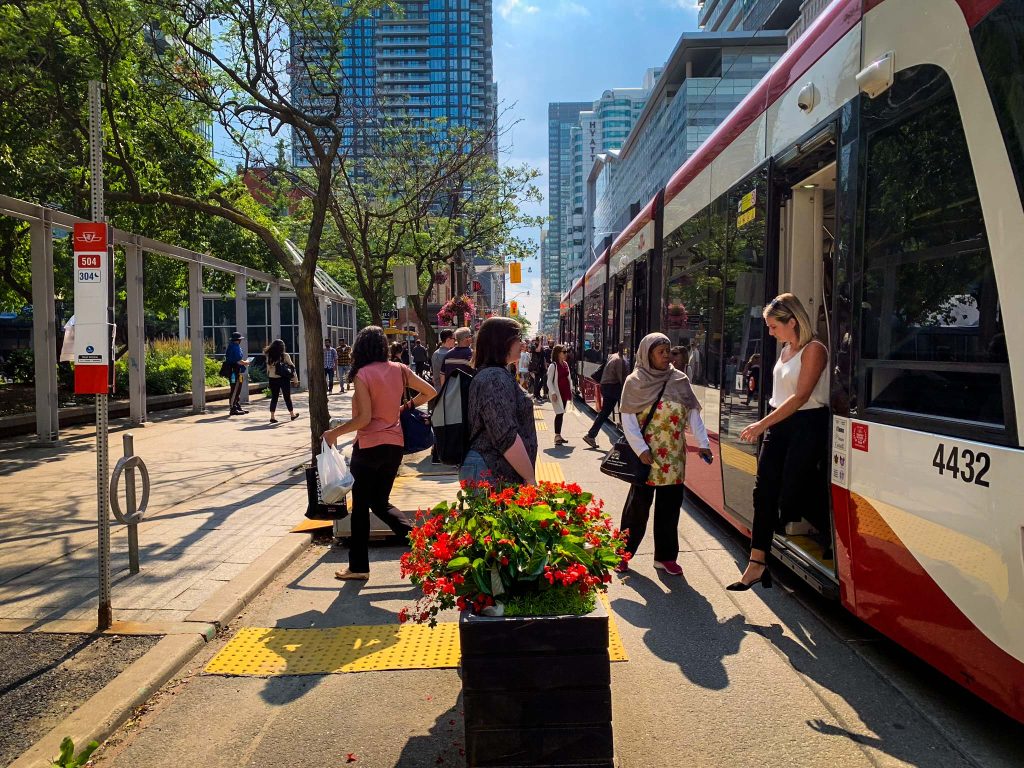
King Street Transit Priority Corridor
A sweltering day in July 2016. Traffic snarls up because a car is waiting to turn. Exasperated by the wait, drivers’ sweaty hands grip the steering wheels. Someone honks. Passengers on the tram anxiously check their phones – they are running late again. This was the reality of many commuting through King Street, the busiest transit route of the City of Toronto, moving up to 60,000 tram riders and 20,000 additional vehicles on an average weekday.
Jennifer knew that it was time to re-design the busy roadway and decided to turn it into a transit priority corridor. She and her team wanted to restrict through movement and create more space for trams to efficiently get people from A to B. Their pilot project also aimed at beautifying the public realm and increasing business prosperity as King Street runs right through the city’s financial district, where many businesses are located.
Even though that may sound like a fantastic plan, it was met with great opposition. Car-users were upset about being forced onto different routes, and business owners feared that they would lose customers who could no longer drive through King Street.
Jennifer and her team took this opposition seriously. They knew they needed everyone’s support to realise the pilot. To convince opposers, they tried to create a shared narrative by pursuing the following strategy:
- Jennifer and her team engaged stakeholders and involved the public in designing the pilot project. For example, people could express their hopes and concerns in online surveys or at community meetings.
- They also ensured that the pilot’s goals and impact were crystal clear. Information campaigns on social media were launched, public lectures held, and posters in underground stations put up.
- Additionally, the whole pilot was data-driven, meaning, among other factors, Jennifer and her team surveyed traffic activity in King Street. Their surveys showed that the old transit route was incredibly inefficient: even though cars occupied 64% of the street, they only moved about 18% of people.
Jennifer affirms: “That data became a very powerful way of bringing new audiences and new constituencies like the businesses along the corridor.” She adds, “we built a narrative about how the future city was about moving people instead of moving cars, and that we could move significantly more people if we built a transit-oriented corridor”.
King Street after its transformation. Image credit: Jennifer Keesmaat
Creating this shared narrative enabled them to achieve their goals. What started as a pilot project is now permanent – thanks to extensive consultation and gained public support. Through movement is redirected and public transport takes priority. Additionally, there are new bike boxes, public seating areas, and cafés on the side of the road.
The Art of Changemaking
Consulting the public, gaining support, creating a shared narrative – this is exactly what Jennifer describes as the tricky aspects of change. She explains that change is not a technical exercise but rather one of finding like-minded people and inspiring others. If we do not have a shared interest and work towards realising the same vision, we can’t truly unlock change in our cities. Jennifer concludes:
“Change in cities is difficult work. It always has been. And in some ways, it must be if it’s not going to be a top-down exercise, if it’s going to be an exercise that is fundamentally and inherently collaborative. It’s difficult work. But it’s worthwhile work.”

